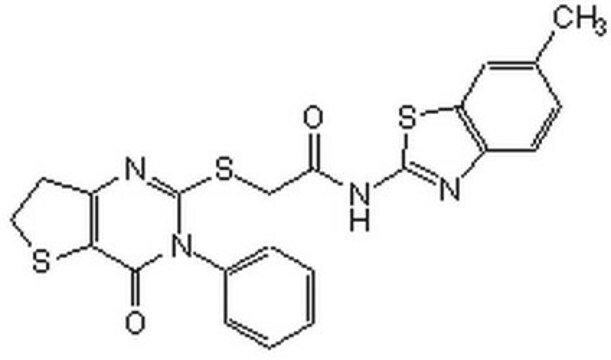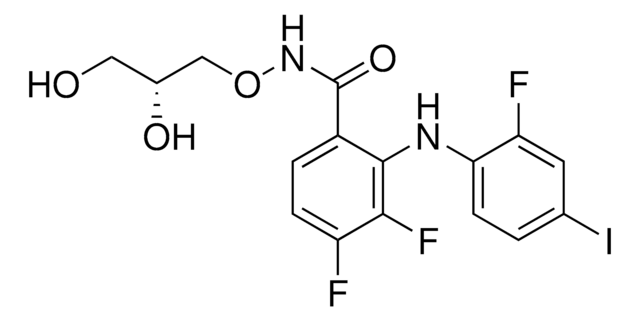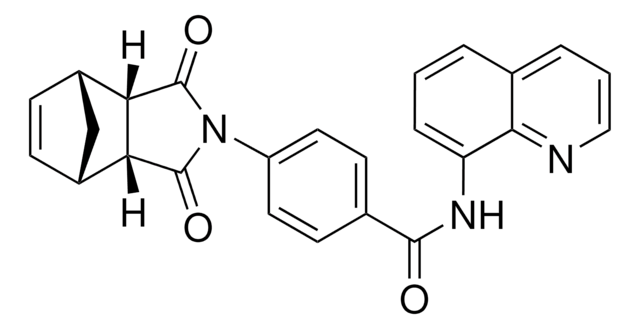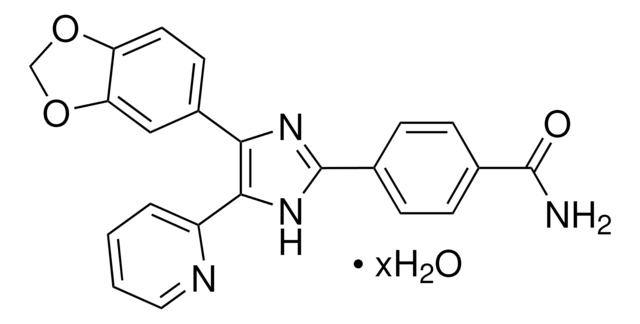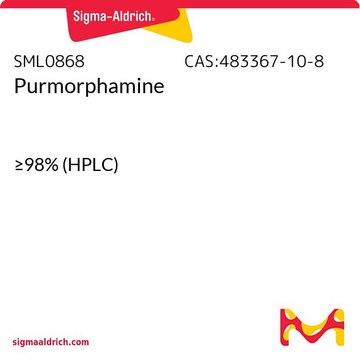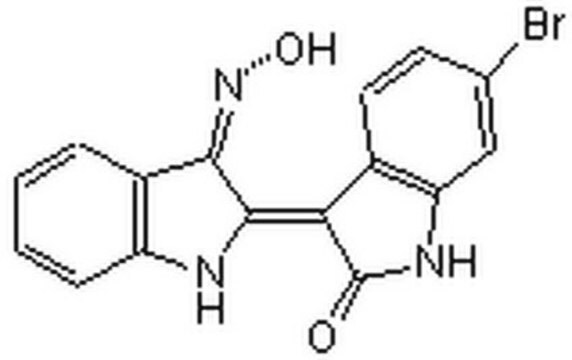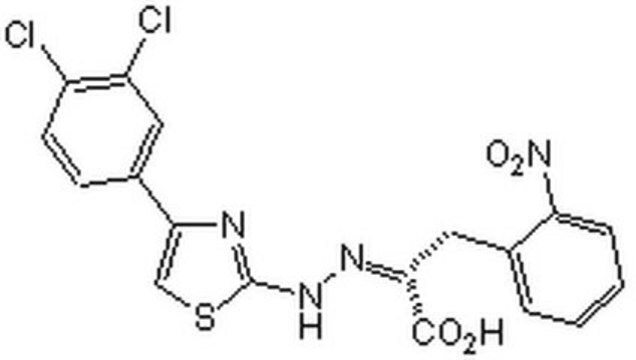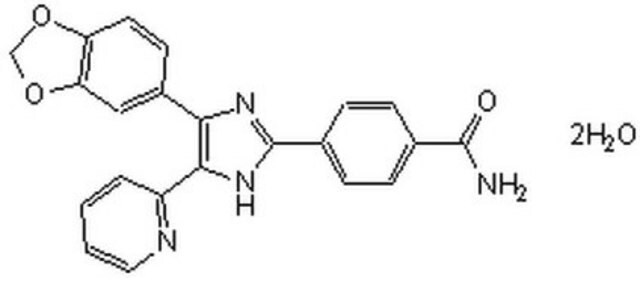361571
CHIR99021
≥95% (HPLC), liquid, GSK-3 inhibitor, Calbiochem
Synonym(s):
InSolution GSK-3 Inhibitor XVI, CHIR99021, 6-(2-(4-(2,4-Dichlorophenyl)-5-(4-methyl-1H-imidazol-2-yl)-pyrimidin-2-ylamino)ethyl-amino)-nicotinonitrile
About This Item
Recommended Products
Product Name
GSK-3 Inhibitor XVI, CHIR99021, InSolution, ≥95%, 25 mM
Quality Level
Assay
≥95% (HPLC)
form
liquid
manufacturer/tradename
Calbiochem®
storage condition
OK to freeze
avoid repeated freeze/thaw cycles
desiccated (hygroscopic)
protect from light
shipped in
ambient
storage temp.
−70°C
InChI
1S/C22H18Cl2N8/c1-13-10-29-21(31-13)17-12-30-22(32-20(17)16-4-3-15(23)8-18(16)24)27-7-6-26-19-5-2-14(9-25)11-28-19/h2-5,8,10-12H,6-7H2,1H3,(H,26,28)(H,29,31)(H,27,30,32)
InChI key
AQGNHMOJWBZFQQ-UHFFFAOYSA-N
General description
Biochem/physiol Actions
GSK-3 α and β
Packaging
Warning
Physical form
Other Notes
Ring, D.B., et al. 2003. Diabetes52, 588.
Bennett, C.N., et al. 2002. J. Biol. Chem.277, 30998.
Cline, G.W., et al. 2002.
Diabetes51, 2903.
Legal Information
Storage Class Code
10 - Combustible liquids
WGK
WGK 2
Flash Point(F)
188.6 °F - closed cup - (refers to pure substance)
Flash Point(C)
87 °C - closed cup - (refers to pure substance)
Regulatory Listings
Regulatory Listings are mainly provided for chemical products. Only limited information can be provided here for non-chemical products. No entry means none of the components are listed. It is the user’s obligation to ensure the safe and legal use of the product.
PDSCL
Deleterious substance
FSL
Group 4: Flammable liquids
Type 3 petroleums
Hazardous rank III
Water insoluble liquid
ISHL Indicated Name
Substances Subject to be Indicated Names
ISHL Notified Names
Substances Subject to be Notified Names
JAN Code
361571-5MG:
Certificates of Analysis (COA)
Search for Certificates of Analysis (COA) by entering the products Lot/Batch Number. Lot and Batch Numbers can be found on a product’s label following the words ‘Lot’ or ‘Batch’.
Already Own This Product?
Find documentation for the products that you have recently purchased in the Document Library.
Customers Also Viewed
Our team of scientists has experience in all areas of research including Life Science, Material Science, Chemical Synthesis, Chromatography, Analytical and many others.
Contact Technical Service
